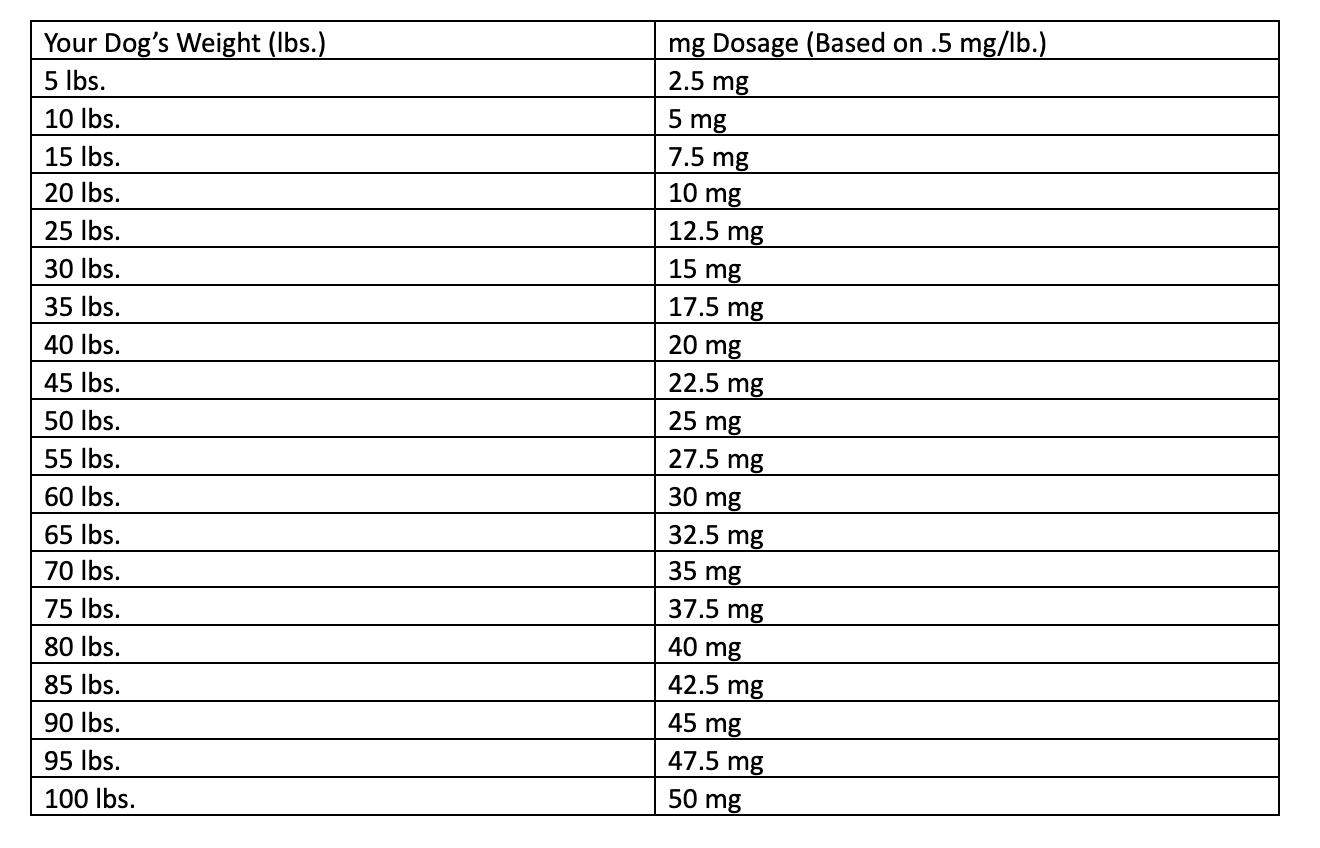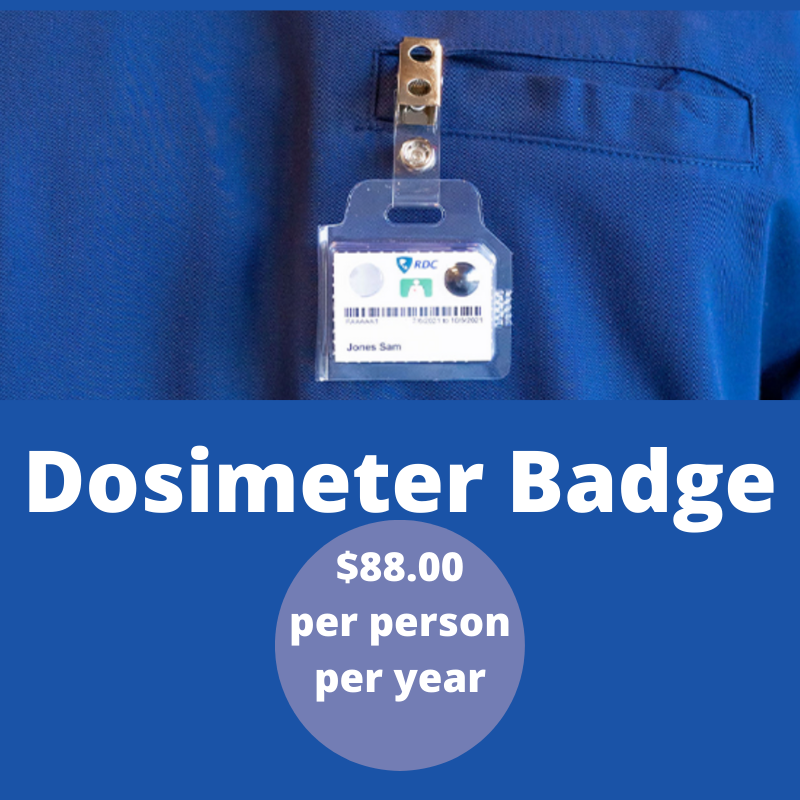Dog Ibuprofen Dosage Chart: Here’s How Much to Give Your Dog
/Table of Contents
- Pain Killers for Dogs
- Carprofen (Rimadyl) Dosage Chart
- Chewables and Caplets Dosage:
- Learn More About Carprofen
- Carprofen: Side Effects, Risk Factors, and Drug Interactions
- The side effects of carprofen include:
- Deracoxib (Dermaxx) Dosage Chart
- Learn More About Deracoxib
- Deracoxib: Side Effects, Risk Factors, and Drug Interactions
- Firocoxib (Previcox) Dosage Chart
- Learn More About Firocoxib
- Firocoxib: Side Effects, Risk Factors, and Drug Interactions
- Follow Veterinarian Instructions
- In Case of an Emergency
- Conclusion
When your dog is in pain, it is stressful for both yourself and your dog; because of this, you probably want to give them a pain killer to take away the pain and stress. But the anatomy of dogs and humans is different. So, you need to know the dosage of pain killers and the type of pain killer to give them.
It is not safe to give your dog human pain killers that contain ibuprofen such as Advil, or even ones that do not contain ibuprofen, such as Tylenol. These are not formulated for dogs, and giving it to them could result in an overdose and potentially death. Instead, take your dog to the vet and get a prescription for a dog-safe pain killer.
Below, we will talk about the dosage of these dog-safe pain killers you should give to your dog based on their weight; and we will go over how often to provide them with painkillers. Also, we will talk about why ibuprofen, Advil, and other pain killers made for humans that are dangerous for your dog.
Never Give Your Dog Ibuprofen or Any Other Pain Killers Made for People.
Before we get into the pain killer dosage chart, you need to know that you should never give your dog Non-Steroidal Anti-Inflammatory drug (NSAIDs) such as "ibuprofen (Advil), acetaminophen (Tylenol), aspirin or any other pain reliever made for human consumption,” unless under the direction and supervision of your veterinarian.
Pain killers like ibuprofen may seem like a cheap alternative; after all, you don’t need a prescription for them, and you won't have to pay for the visit to the vet. They are not dog safe, though, and in the end, the money you save will not be worth the harm it could do to your dog.
If you give your dog these pain killers, there are many negative side effects that your dog can experience as a result of taking the medicine. These side effects include:
Ulcers
Bloody Vomit
Bloody Diarrhea
Loss of Appetite
Bleeding Disorders
Kidney Dysfunction
Liver Damage
Death
Dog-safe pain killers can have similar side effects, but they are safer because they are created with the dog anatomy in mind.
The biggest danger with just using human pain killers is that it is not being supervised by a veterinarian. Without supervision, you could accidentally overdose your dog on painkillers, which would result in death. Even if you do give them the correct dose, since it is formulated for humans, there is still a big risk that your dog will experience the aforementioned negative side effects.
So, make sure your dog stays safe. If they are in pain, don’t treat it by yourself. Take them into the vet, listen to and follow their recommendations, and get your pet back to their old self!
Pain Killers for Dogs
Now, we will talk about the pain killers that are made for dogs. To get these pain killers, you will need to take your dog to the vet so that the medication can be prescribed to them.
The most common dog safe pain killers are:
Carprofen, a common brand that uses this is Rimadyl.
Deracoxib, the brand is Dermaxx.
Firocoxib, the brand is Previcox.
You always will want to follow your vet’s instructions when it comes to the dosage size of these medications. But there are some general dosage rules you can follow for each of these medications.
Carprofen (Rimadyl) Dosage Chart
First, we will look at the Carprofen dosage chart. This medication should only be used when prescribed by a veterinarian.
For carprofen, you want to give your dog 2 mg per pound (of their weight) once daily.
For the sake of simplicity, we will go off the recommended Rimadyl dosages, as they are a big brand that uses carprofen.
Chewables and Caplets Dosage:
If you miss a dose, you can still give your dog the medication unless it is almost time to provide them with another dose. In this case, it is dangerous to give two doses at the same time, so skip the missed dose. Then, continue with the regular dosing schedule.
Learn More About Carprofen
Before you use any medication, it is not a bad idea to know a little about it, what it is used for, and its side effects; that way, you can know what you are giving to your dog.
Knowing the medication allows you to open up a discussion with your vet, giving you the opportunity to ask what the best option for your dog is!
Carprofen, whose brand name is Rimadyl, is a dog-safe Non-Steroidal Anti-Inflammatory Drug (NSAID) that is typically prescribed to treat:
Arthritis
Hip Dysplasia
Post-Operative Pain and Inflammation
This medication is given orally, and it is recommended that you give it with food, although it is not necessary. But giving it with food decreases the chance that your dog will get sick and throw up.
In the United States, carprofen is only FDA-approved for dogs. When it is used for animals such as cats and other small mammals, it is considered off-label or extra-label. Do not give the medication to any other animals you have in the house unless prescribed by a veterinarian.
Generally, carprofen should be stored at room temperature, which is about 59°F to 86°F. Store it at these temperatures unless otherwise noted.
Carprofen: Side Effects, Risk Factors, and Drug Interactions
Carprofen, like any medication, has several side effects and risk factors that you should be aware of before giving your pet its first dose. If your dog experiences any of the side effects below, stop the medication and talk to your vet immediately.
The side effects of carprofen include:
Gastrointestinal upset that includes symptoms such as mild vomiting and lack of appetite.
Serious side effects can include, “liver, kidney, or gastrointestinal damage characterized by severe vomiting, black or bloody stools, bloody vomit, increased drinking or urination, yellow skin or eyes, severe tiredness, persistent lack of appetite.”
There also may be neurological issues such as seizures, disorientation/incoordination, and paralysis.
Skin effects such as scabs, itching, and hair loss.
Allergic reactions such as facial swelling or hives.
Be aware that the medication could also affect lab results. So, even though your vet will prescribe it, make sure that everyone in the clinic knows that your dog is on these medications. That way, you won’t get a scare from a lab result that isn’t quite right.
In addition to the side effects, there are some risk factors to consider:
Pets with bleeding disorders or low platelet counts should not take the medication.
Pets that are allergic to NSAIDs or similar medications should not take it.
If you own an old dog or one younger than six weeks, use these with caution.
Also, use caution for pregnant, lactating pet pets and those with preexisting conditions such as liver disease.
Be sure to let your vet know of any medications that your pet is on, including any herbal remedies and vitamins that they may be taking.
Deracoxib (Dermaxx) Dosage Chart
The next major pain medication made for dogs is deracoxib. This medication should only be used when prescribed by a veterinarian.
For this medication, it is recommended that you give your dog 0.45 mg - 0.91 mg/lb./day as a single dose as needed.
The brand name for this medication is Deramaxx. We will go off the recommended Deramaxx dosage to create our chart for this medication.
Before reading the chart, note that this is going off a .5 mg/lb. dosage. Since this chart is just an example though, you should follow the dosage that was recommended by your vet.
If you miss a dose you should give it to them as soon as you can unless it is close to the time for the next one. In this case, skip the dose you missed. Once you make the correction, continue with the dosage schedule you were previously using.
Learn More About Deracoxib
Just like carprofen, deracoxib, brand name Dermaxx, is a NSAID. Deracoxib is used to treat:
Post-Surgery Pain (this includes things such as dental surgeries)
Osteoarthritis
Other Injuries or other Pain-Causing Conditions
Deracoxib is a chewable tablet that should be given with food to prevent an upset stomach. After eating, it takes about one to two hours for your dog to show signs of improvement.
Remember that these are delicious chewable tablets, well at least in your dog’s mind. Because of this, you will want to store them in a tightly sealed container and put them out of the reach of both animals and children. Make sure that they stay at room temperature. If your vet has special storage instructions, make sure to follow those.
Deracoxib: Side Effects, Risk Factors, and Drug Interactions
Even though deracoxib is dog-safe, there is still a chance your dog could experience side effects from the medication. Here are some of the side effects to watch out for:
Changes in behavior (i.e., increased aggression, incoordination, etc.)
Jaundice (yellowing gums, skin, or in the white of the eyes.)
Changes in how much they drink or urinate.
Skin irritations such as redness or scabbing.
Decreased appetite.
Seizure
Stomach issues, such as ulcers or stomach pain.
If your dog has these side effects, stop giving them the medication and contact your vet as soon as possible.
There are also risk factors for some dogs. For example, if your dog is pregnant, has an NSAID allergy, or has liver disease, they will not be able to take the medication. A full list of the risk factors can be found here. Make sure that you review your pet’s medical history with the vet before they are prescribed any medication.
Also, make sure your vet is aware of any medications your pet is on; this includes natural remedies. Since some medicines and natural remedies don't mix, it is important for your vet to know everything that your dog is on to give them the best care possible.
Firocoxib (Previcox) Dosage Chart
The final major pain killer to talk about is Firocoxib. Again, this medication should only be given under veterinarian supervision.
The common brand name is Previcox, and the dosage is 2.27 mg per pound.
For the dosage chart, we will go off the dosing guide provided by the Previcox website.
If you miss a dose, follow the same steps as deracoxib and carprofen.
Learn More About Firocoxib
Firocoxib, brand name Previcox, just like the other two, is a NSAID that is used to treat:
Pain and Inflammation
Arthritis
Post-surgery Pain
Pain from Trauma
Firocoxib is unique because, although it does come in a chewable tablet, it can also be given in the form of an oral paste or compounded into a liquid. Also, as with carprofen, it can be given without food. But if your dog gets sick, give them food next time to combat nausea.
Store it at room temperature. If it is in compounded form, refer to the label for storage instructions.
Firocoxib: Side Effects, Risk Factors, and Drug Interactions
The side effects associated with firocoxib are the same as those that are associated with carprofen and deracoxib, they include:
Decreased Appetite
Jaundice
Changes in Behavior
Skin Irritations
If your dog has these, make sure you talk with the vet before continuing them on the medication.
For risk factors, make sure that you make your vet aware of factors such as kidney disease, pregnancy, and predisposition to dehydration before you start your pet on the meds. Make sure your vet is aware of any medicine or natural remedies that your dog is taking.
Follow Veterinarian Instructions
The above dosages are the typical recommendations based on your average dog. Each dog is different, and as a result, they may be prescribed a different dosage by your vet.
Because each dog is different, with a different medical history and needs, you need to follow whatever the vet says because they know the safest and best dosage for you dog.
In Case of an Emergency
If your dog experiences serious side effects such as seizures as a result of taking the medicine, you need to make sure you take them to the nearest veterinary ER.
You need to be aware that a veterinary clinic is not the same as a veterinary ER. Just like with out own doctors, clinics are for checkups and the ER is for emergencies.
Veterinary ERs are open 24/7. So, if your dog has an emergency in the middle of the night, you can drive to the nearest one and they will be able to help you and your dog.
Do not delay taking them to the ER if they are showing signs of major side effects either. The sooner you get them in, the sooner they will get treatment.
It is good to be prepared ahead of time for any health emergency. So, find local animal ERs and consult with your vet on which ones they prefer. That way, you can know where to go if your pet is ever in an emergency situation.
Conclusion
No one wants to see their pet experience pain. Because of this, you should take your dog to the vet so that they can be prescribed pain medication.
Make sure that you give your pet the right medication and dosage for whatever weight they may be. Although there are general rules of thumb to follow, listen to your vet's instructions on dosage as they are factoring in things such as your pet’s medical history.
It may be tempting just to give them human pain killers, such as ibuprofen, Tylenol, etc. But these are not formulated for dogs. As a result, there is a much higher chance they will experience negative side effects or even overdose on the medicine.
Although dog pain killers have side effects too, they are safer since they are formulated for dogs and are given under veterinary supervision.
With the right medication, your dog will be back to its old self before you know it!
Sources
https://www2.zoetisus.com/content/_assets/docs/Petcare/dosage-chart-rimadyl-link-out.pdf
https://www.petmd.com/pet-medication/deracoxib-deramaxx
https://www.veterinaryplace.com/deramaxx-for-dogs-dosage-chart/
https://www.petmd.com/pet-medication/firocoxib-previcox
https://www.previcox.com/for-vets/EasyDosing.html
https://www.petmd.com/pet-medication/rimadyl
https://vcahospitals.com/know-your-pet/carprofen































